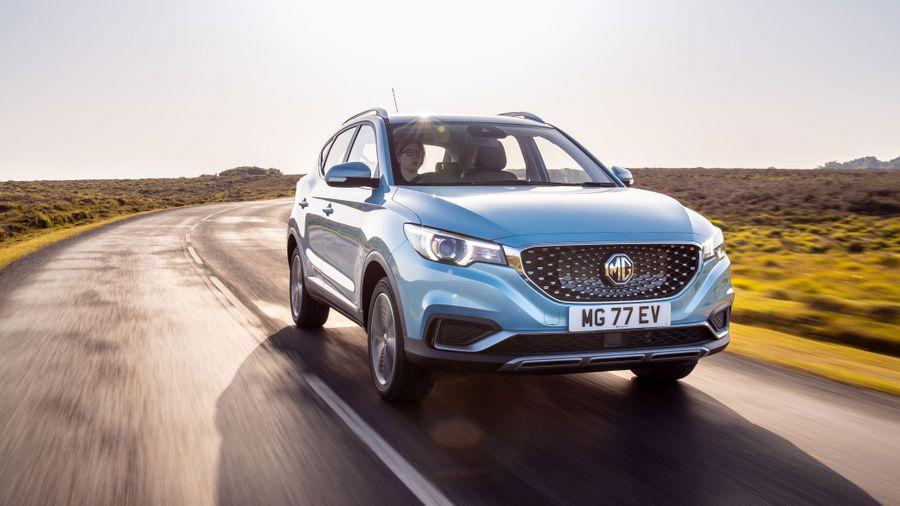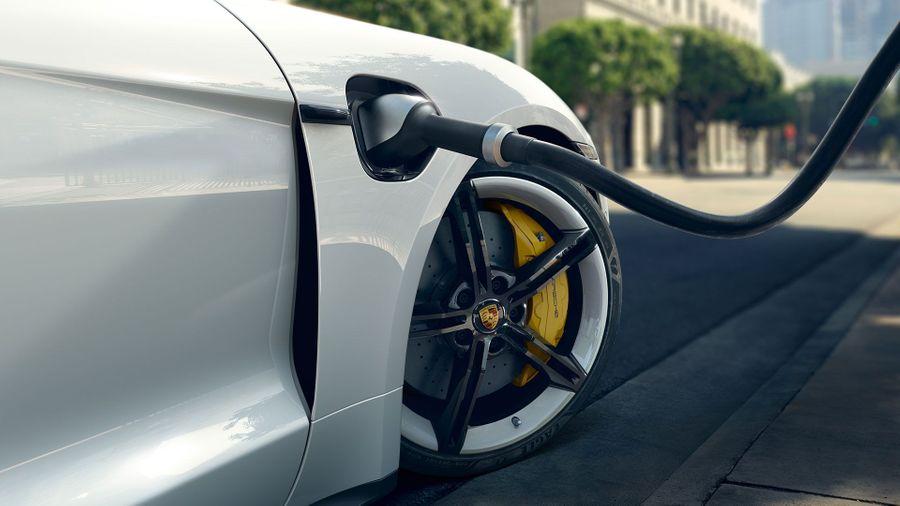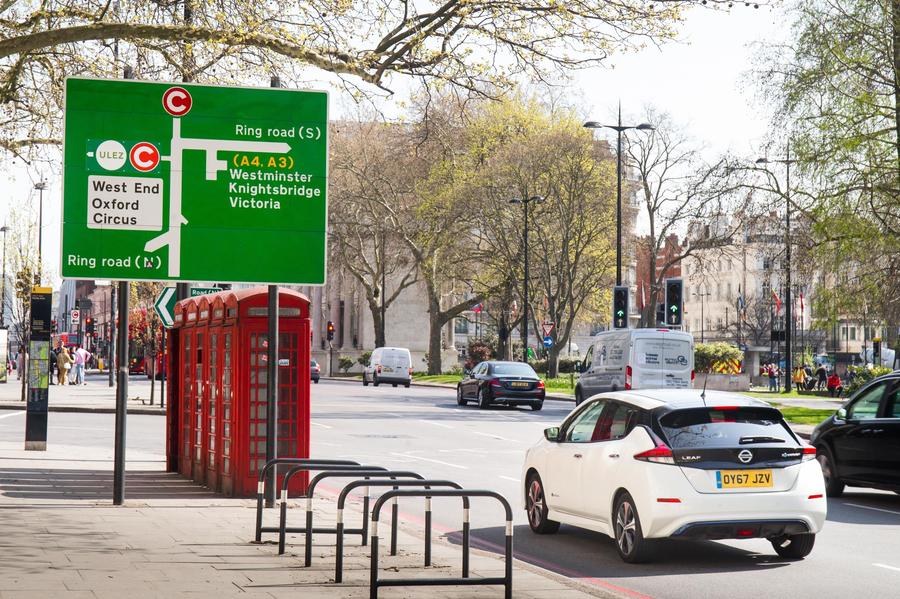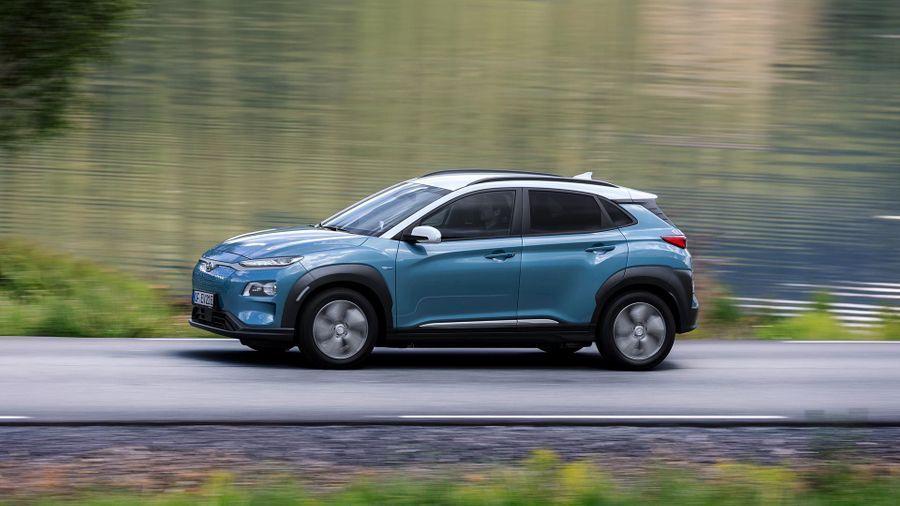FeatureHow green are electric cars?
For World Earth Day, we take a look how environmentally friendly electric cars really are when it comes to producing them and keeping them on the road.
 View gallery
View galleryThe eco-friendly credentials of electric cars are much touted as part of their appeal, but are they really that much better for the environment than traditional internal combustion engine (ICE) cars like petrol and diesels?
We take a look at the overall impact electric cars have on our environment – from their production, to running power, to recycling.
We take a look at the overall impact electric cars have on our environment – from their production, to running power, to recycling.
What is a carbon footprint?
In this article, we’ll be looking at the carbon footprint of electric cars.
A carbon footprint is the measure of how many greenhouse gases are released into the environment by a product, organisation, individual or vehicle.
The greenhouse gases released are all expressed as the equivalent amount of carbon dioxide for easier like-for-like comparison, hence the name ‘carbon’ footprint.
The carbon footprint of a car extends beyond just tailpipe emissions. It also looks at how much carbon dioxide is released in the manufacture and maintenance of cars.
How power is generated, for example using fossil fuels to generate electricity for charging EVs, also contributes to a car’s carbon footprint.
A carbon footprint is the measure of how many greenhouse gases are released into the environment by a product, organisation, individual or vehicle.
The greenhouse gases released are all expressed as the equivalent amount of carbon dioxide for easier like-for-like comparison, hence the name ‘carbon’ footprint.
The carbon footprint of a car extends beyond just tailpipe emissions. It also looks at how much carbon dioxide is released in the manufacture and maintenance of cars.
How power is generated, for example using fossil fuels to generate electricity for charging EVs, also contributes to a car’s carbon footprint.
Are electric cars eco-friendly?
While electric cars are, overall, much better for the environment, they do still produce a carbon footprint.
• The production of the cars, particularly the batteries, still involves the use of non-renewable materials.
• The grid energy used to charge cars is produced using fossil fuels, as we do not yet have enough renewable energy to support charging all vehicles.
• Other factors, like the wear of tyres generating dust particles and particulate matter, can contribute too.
That said, the carbon footprint of electric cars can potentially be lower than that of ICE vehicles, and ongoing innovations are further reducing the footprint all the time. And while an EV might be more carbon-intensive to manufacture at the outset the ‘breakeven' point in the vehicle’s lifespan where it overtakes an equivalent ICE one is improving.
They’re not perfect, nothing is, but they do have a more positive and tangible impact on our environment than their ICE equivalents.
• The production of the cars, particularly the batteries, still involves the use of non-renewable materials.
• The grid energy used to charge cars is produced using fossil fuels, as we do not yet have enough renewable energy to support charging all vehicles.
• Other factors, like the wear of tyres generating dust particles and particulate matter, can contribute too.
That said, the carbon footprint of electric cars can potentially be lower than that of ICE vehicles, and ongoing innovations are further reducing the footprint all the time. And while an EV might be more carbon-intensive to manufacture at the outset the ‘breakeven' point in the vehicle’s lifespan where it overtakes an equivalent ICE one is improving.
They’re not perfect, nothing is, but they do have a more positive and tangible impact on our environment than their ICE equivalents.

View gallery
How electric cars are helping the environment
Reduced air pollution
Electric cars produce zero tailpipe emissions – this means they aren’t pumping carbon dioxide, nitrogen oxide and other pollutants from the exhaust into the air while you drive them, at least ‘locally’ to where the car is being driven.
This massively reduces air pollution levels. In fact, one electric car can save an average of 1.5 million grams of CO2 in a year.
Better air quality is especially important in towns and cities, which is why many are introducing Clean Air Zones (like London’s ULEZ). You can learn more about Clean Air Zones here.
While there are zero direct emissions, electric cars tend to be heavier than ICE vehicles so can produce more traffic emissions such as dust from car brakes, tyre and road surfaces.
The level of pollution emitted by EVs is significantly less compared to diesel and petrol cars. Drax reported, that a small electric hatchback would emit around 33 grams of CO2 per km driven, which is just a quarter of a 2019 Ford Fiesta’s emissions (one of the most popular conventional and comparable vehicles).
This massively reduces air pollution levels. In fact, one electric car can save an average of 1.5 million grams of CO2 in a year.
Better air quality is especially important in towns and cities, which is why many are introducing Clean Air Zones (like London’s ULEZ). You can learn more about Clean Air Zones here.
While there are zero direct emissions, electric cars tend to be heavier than ICE vehicles so can produce more traffic emissions such as dust from car brakes, tyre and road surfaces.
The level of pollution emitted by EVs is significantly less compared to diesel and petrol cars. Drax reported, that a small electric hatchback would emit around 33 grams of CO2 per km driven, which is just a quarter of a 2019 Ford Fiesta’s emissions (one of the most popular conventional and comparable vehicles).
Electric battery efficiency
Electric cars tend to use lithium-ion batteries, which use less energy overall than the lead-acid batteries used in ICE cars.
Lithium-ion batteries require less energy to remain charged, and up to 90% of a lithium-ion battery charge can be used efficiently. Comparatively, only 80-85% of a lead-acid battery’s charge can be used efficiently.
Lithium-ion batteries also have a higher depth of discharge. Usually, a lithium-ion battery can be used up to 85% or more in a single cycle while lead-acid batteries shouldn’t be discharged more than 50%. Also, lead-acid batteries self-discharge more quickly than lithium-ion batteries.
Standard batteries can overheat when charging, which decreases the battery’s performance and, on some occasions, causes leaks or an explosion due to overheating. A lithium-ion battery is fitted with a battery management system (BMS) to protect against short circuits and overcharging, which consumes energy.
Learn more about electric car batteries.
Lithium-ion batteries require less energy to remain charged, and up to 90% of a lithium-ion battery charge can be used efficiently. Comparatively, only 80-85% of a lead-acid battery’s charge can be used efficiently.
Lithium-ion batteries also have a higher depth of discharge. Usually, a lithium-ion battery can be used up to 85% or more in a single cycle while lead-acid batteries shouldn’t be discharged more than 50%. Also, lead-acid batteries self-discharge more quickly than lithium-ion batteries.
Standard batteries can overheat when charging, which decreases the battery’s performance and, on some occasions, causes leaks or an explosion due to overheating. A lithium-ion battery is fitted with a battery management system (BMS) to protect against short circuits and overcharging, which consumes energy.
Learn more about electric car batteries.
Reduced noise pollution
There’s much said about how quiet electric cars are – we’ll leave it to you to decide if you’re a fan of that or not.
Either way, roads will be much quieter once electric cars are in the majority. Imagine a main road through a town, with only the gentle whirr of an EV as they zip by – sure to be very different from the cacophony of petrol and diesel engines we hear today.
Near silent cars do present their own problems of course – we’re so used to hearing cars approach that there’s a risk of us stepping out into oncoming traffic, or not hearing a car as it comes up behind us.
Fortunately, laws are in place to protect us. As of July 2019, all electric cars must include a sound generator that produces a certain level of noise when reversing or running below 12 mph. It’ll be much quieter than a traditional exhaust pipe, but loud enough to keep us aware.
Either way, roads will be much quieter once electric cars are in the majority. Imagine a main road through a town, with only the gentle whirr of an EV as they zip by – sure to be very different from the cacophony of petrol and diesel engines we hear today.
Near silent cars do present their own problems of course – we’re so used to hearing cars approach that there’s a risk of us stepping out into oncoming traffic, or not hearing a car as it comes up behind us.
Fortunately, laws are in place to protect us. As of July 2019, all electric cars must include a sound generator that produces a certain level of noise when reversing or running below 12 mph. It’ll be much quieter than a traditional exhaust pipe, but loud enough to keep us aware.

View gallery
Where electric cars still have work to do
Electricity production
Currently, the electricity in the UK is produced using a variety of sources, including some fossil fuels. This means that, even though electric cars aren’t directly pumping pollution into the ecosystem, charging them still indirectly contributes to the carbon footprint.
That said, the total carbon emissions of an electric car are between 17% and 30% lower than driving a petrol or diesel car, according to research by the European Energy Agency (EEA).
It’s also worth mentioning that one large power station is more energy-efficient than many small engines overall, so having one station generate the energy for electric cars has a smaller carbon footprint producing energy overall, than running multiple petrol or diesel cars of a similar make and build.
Learn more about charging electric cars.
That said, the total carbon emissions of an electric car are between 17% and 30% lower than driving a petrol or diesel car, according to research by the European Energy Agency (EEA).
It’s also worth mentioning that one large power station is more energy-efficient than many small engines overall, so having one station generate the energy for electric cars has a smaller carbon footprint producing energy overall, than running multiple petrol or diesel cars of a similar make and build.
Learn more about charging electric cars.
How can we further reduce the impact?
These emissions can be further reduced by switching to renewable resources such as wind and solar energy. Experts are also looking at using battery storage units to store energy sourced from renewable resources, so that it can be used later when demand is high.
One easy way to reduce the carbon emissions of charging an electric car is to charge it overnight. There’s less demand for power at night, so the electricity generated by wind or other renewable power sources, is likely to be enough and we won’t have to tap into fossil fuel reserves.
One easy way to reduce the carbon emissions of charging an electric car is to charge it overnight. There’s less demand for power at night, so the electricity generated by wind or other renewable power sources, is likely to be enough and we won’t have to tap into fossil fuel reserves.
Battery production
The majority of emissions produced by an EV are during the manufacturing and assembly of electric batteries.
Various rare-earth metals like lithium, nickel, cobalt or graphite are used to manufacture electric batteries, the mining and extraction of which contribute to emissions.
Keep in mind that rare-earth elements are used in the production of traditional ICE cars too. Components like steel, plastic, circuit boards, catalytic converters, glass and lead-acid batteries use rare-earth elements.
In fact, the production of some ICE vehicles uses more earth elements than the production of an EV. For example, oil refining uses rare-earth elements like lanthanum, while a catalytic converter uses platinum group metals – which aren’t used in EVs.
Various rare-earth metals like lithium, nickel, cobalt or graphite are used to manufacture electric batteries, the mining and extraction of which contribute to emissions.
Keep in mind that rare-earth elements are used in the production of traditional ICE cars too. Components like steel, plastic, circuit boards, catalytic converters, glass and lead-acid batteries use rare-earth elements.
In fact, the production of some ICE vehicles uses more earth elements than the production of an EV. For example, oil refining uses rare-earth elements like lanthanum, while a catalytic converter uses platinum group metals – which aren’t used in EVs.
How can we further reduce the impact?
Many manufacturers are investing in environmentally-friendly, ethically sound mining techniques – for example using hydropower to mine for cobalt, rather than diesel generators.
Recycling batteries
According to Circular Energy Storage, more than 400,000 tons of batteries will reach the end of life in the EU in 2030, but there is no standardised process for recycling batteries yet.
There are three main ways of recycling a battery: pyrometallurgical recycling, hydrometallurgical recycling and direct cathode recycling. The efficiency and emissions produced vary according to the elements used in a battery.
A common way of recycling electric batteries is by reusing their elements for other purposes such as in solar PV systems, home energy storage, or data centres.
Around 80% of the components used in the battery are usually recyclable. There are many ongoing studies on how lithium-ion batteries can be better recycled, though the amount of material currently lost is low – around 30 grams. Meanwhile, the weight of petrol or diesel burnt during the average lifetime of a conventional vehicle is around 300-400 times more than the total quantity of battery cells metals ‘lost’, as per an analysis by Transport & Environment.
There are three main ways of recycling a battery: pyrometallurgical recycling, hydrometallurgical recycling and direct cathode recycling. The efficiency and emissions produced vary according to the elements used in a battery.
A common way of recycling electric batteries is by reusing their elements for other purposes such as in solar PV systems, home energy storage, or data centres.
Around 80% of the components used in the battery are usually recyclable. There are many ongoing studies on how lithium-ion batteries can be better recycled, though the amount of material currently lost is low – around 30 grams. Meanwhile, the weight of petrol or diesel burnt during the average lifetime of a conventional vehicle is around 300-400 times more than the total quantity of battery cells metals ‘lost’, as per an analysis by Transport & Environment.
How can we further reduce the impact?
There’s a lot of research going into how electric car batteries can be reused. One popular idea it to use them as storage systems for electricity, for example.
Re-purposing batteries is expensive and time consuming. There is still limited information on how it can work, and a lack of harmonised standards or regulations. More work needs to be done to ensure we get the most out of electric car batteries and justify the carbon footprint generated in their creation.
The more use we can get out of a single battery, the more its overall environmental impact can be minimised over its lifetime.
Re-purposing batteries is expensive and time consuming. There is still limited information on how it can work, and a lack of harmonised standards or regulations. More work needs to be done to ensure we get the most out of electric car batteries and justify the carbon footprint generated in their creation.
The more use we can get out of a single battery, the more its overall environmental impact can be minimised over its lifetime.

View gallery
UK’s road to zero emissions
According to Society of Motor Manufacturers and Traders (SMMT), battery electric vehicles and plug-in hybrid electric vehicles registrations have drastically increased, while the number of diesel and petrol car registrations are reducing.
As electric cars become more commonly used and the technology is used on scale, the processes for manufacturing and extracting raw materials will become more efficient and sustainable. This should be followed by reduced prices and better techniques for producing electricity for charging and recycling the battery.
Countries like France and Norway, which are decarbonising their electricity generation process and relying on near-zero carbon sources, have a bigger impact on reducing carbon emissions.
In the UK, renewable energy production has already started to surpass fossil fuel produced energy.
The government has also promised £40 million in funding for projects to make EV batteries longer lasting and cleaner.
The EU legislation has set mandatory emission reduction targets for new cars to be 95ssg CO2/km from 2021.
As electric cars become more commonly used and the technology is used on scale, the processes for manufacturing and extracting raw materials will become more efficient and sustainable. This should be followed by reduced prices and better techniques for producing electricity for charging and recycling the battery.
Countries like France and Norway, which are decarbonising their electricity generation process and relying on near-zero carbon sources, have a bigger impact on reducing carbon emissions.
In the UK, renewable energy production has already started to surpass fossil fuel produced energy.
The government has also promised £40 million in funding for projects to make EV batteries longer lasting and cleaner.
The EU legislation has set mandatory emission reduction targets for new cars to be 95ssg CO2/km from 2021.
Learn more about electric cars
If you’re contemplating a switch to electric for your next car, you can learn more about electric cars on Auto Trader.




